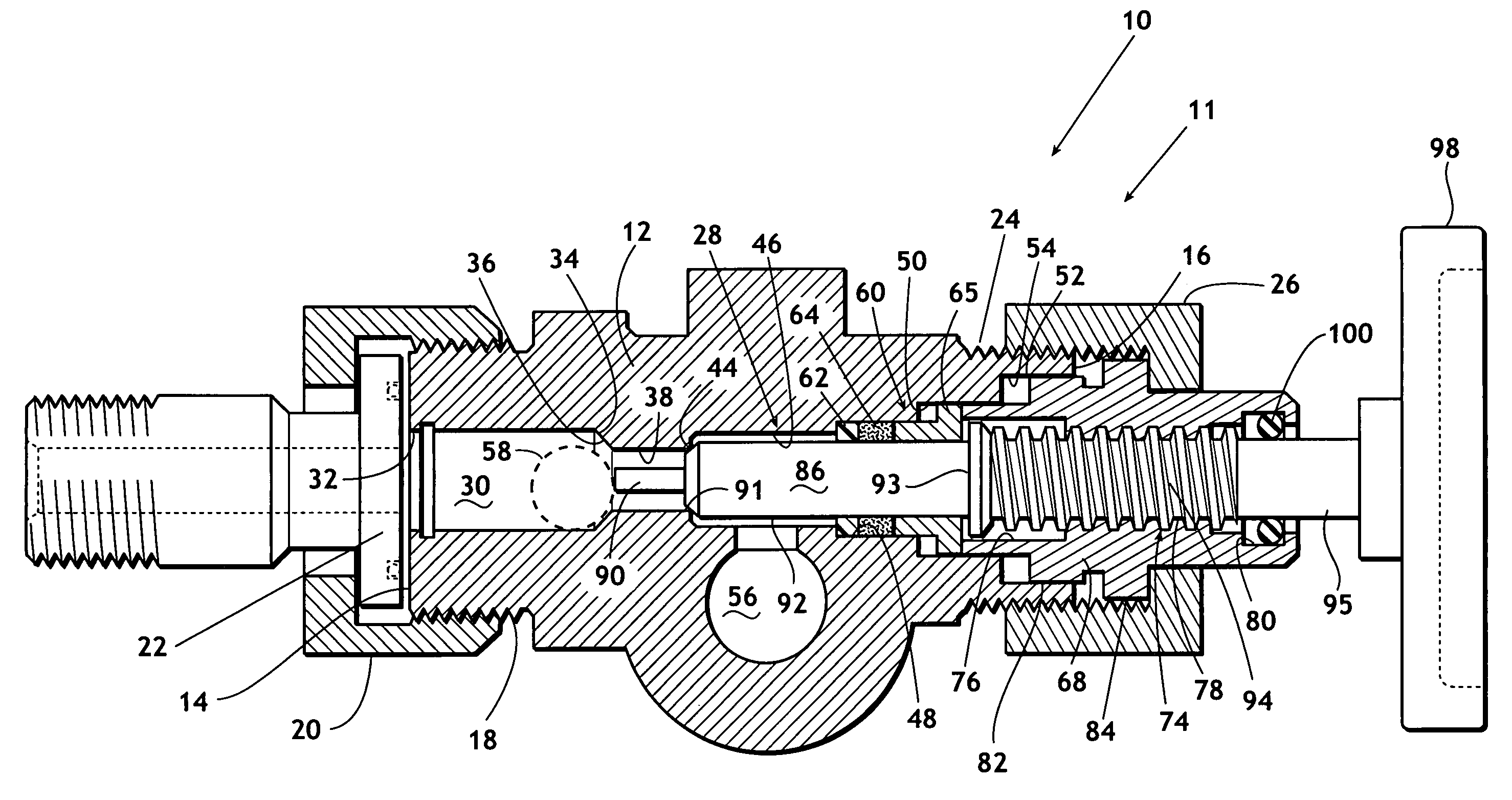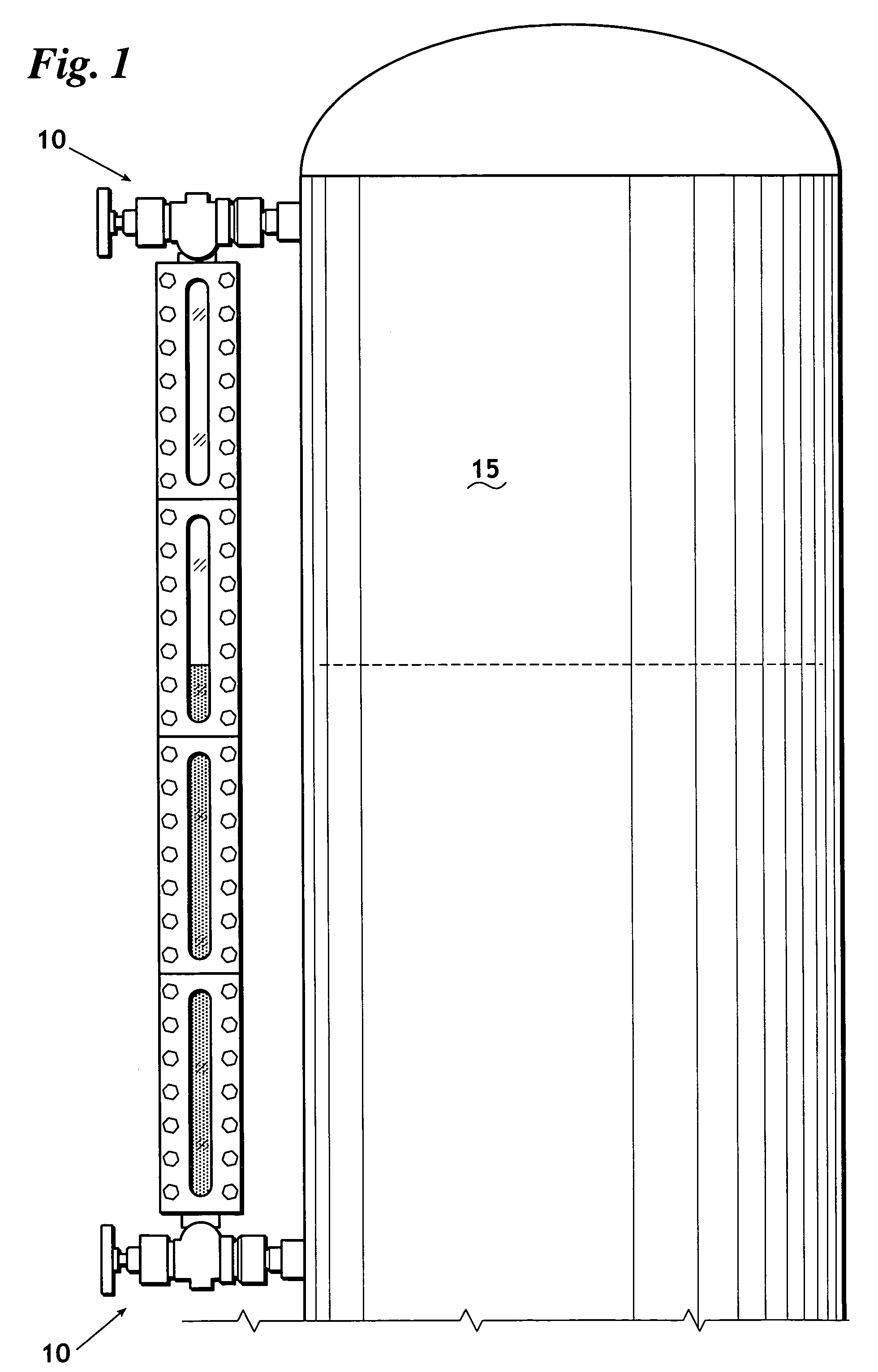Valve
a valve and valve body technology, applied in the field of valves, can solve the problems of liquid being very corrosive, internal valves in constant contact with the liquid of the vessel, and sudden drop in pressure across the valv
- Summary
- Abstract
- Description
- Claims
- Application Information
AI Technical Summary
Benefits of technology
Problems solved by technology
Method used
Image
Examples
Embodiment Construction
[0035]Referring now to FIGS. 1–5, shown is a valve designated generally 10. Referring in particular to FIGS. 2 and 3, a first embodiment 11 of valve 10 is shown. Valve 11 has a body 12 having a first end 14 and a second end 16. Body 12 comprises valve unit 13. First end 14 has external threads 18 formed thereon. External threads 18 preferably receive a union nut 20 that secures the body 12 to a vessel, e.g. vessel 15 (FIG. 1) by engaging a floating shank 22 (FIG. 3). Second end 16 of body 12 preferably has external threads 24 for receiving a bonnet nut 26.
[0036]Referring now primarily to FIG. 3, body 12 has a passageway 28 formed therein. Passageway 28 extends from first end 14 to second end 16 of body 12. First end 14 of passageway 28 is preferably the valve inlet. Passageway 28 defines a check ball chamber 30 in having a first end 32 and a second end 34. First end 32 of check ball chamber 30 communicates with first end 14 of body 12. Check ball chamber 30 preferably has a tapered ...
PUM
 Login to View More
Login to View More Abstract
Description
Claims
Application Information
 Login to View More
Login to View More - R&D
- Intellectual Property
- Life Sciences
- Materials
- Tech Scout
- Unparalleled Data Quality
- Higher Quality Content
- 60% Fewer Hallucinations
Browse by: Latest US Patents, China's latest patents, Technical Efficacy Thesaurus, Application Domain, Technology Topic, Popular Technical Reports.
© 2025 PatSnap. All rights reserved.Legal|Privacy policy|Modern Slavery Act Transparency Statement|Sitemap|About US| Contact US: help@patsnap.com



